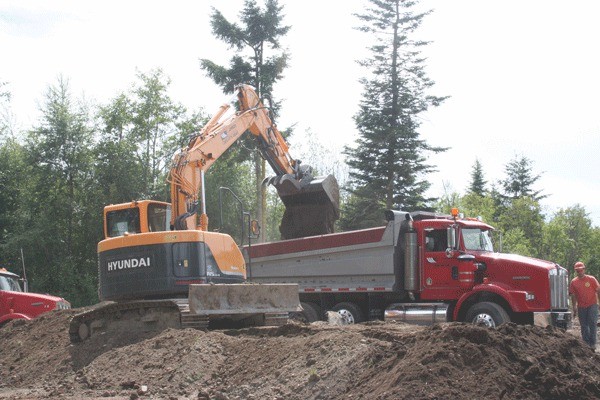Work began this month on a $5-million project that will add 4 million gallons of storage to Oak Harbor’s water system.
Veterans Northwest Construction is moving truckloads of dirt to make way for the giant water reservoir at the end of Gun Club Road. The welded-steel tank will be 40 feet tall, with a radius of 150 feet.
The reservoir is part of a series of water system improvements in the north end of town. They are aimed at increasing water storage, water pressure and fire flow availability, as well as replacing aging infrastructure.
The projects are seen as a key to promoting economic development in commercial and industrial areas.
City Engineer Joe Stowell told council members that the tank will allow 2.5 days of water storage that can be used in case of an emergency.
The council awarded the contract to build the tank to Veterans Northwest for $4.49 million.
In addition, the council approved a $332,000 consultant agreement with KBA Construction Management for managing the project and a $78,000 agreement with Materials Testing & Consulting for testing services.
A project to install water transmission mains on Gun Club Road was completed last year.
Next Tuesday, the council will consider a $964,000 project for the design of a transmission main and booster station in the north end of town to meet the needs of both the city and the Navy base.
The agenda bill states that “a portion of the northeast Oak Harbor neighborhood bounded by NE O’Leary Street, NE 16th Avenue, NE Regatta Drive and NE 6th Avenue does not have sufficient water pressure to meet standards set by the Washington State Department of Health during fire flow conditions.”
The only solution, it states, is to install a new pump station at the site of the new reservoir.



